Battle ReCPY: The NYC Umeboshi Project
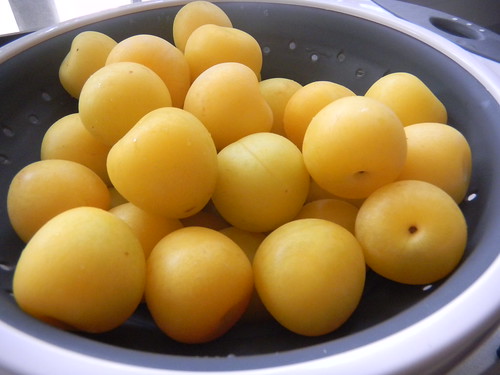
After seeing the Ume Project on the west coast, I was intrigued. I like umeboshi (pickled plums) and every time I go home to Japan, I bring back my mother's homemade ones. After all, I am from Wakayama, where Japan's best umeboshi is made. I should have the umeboshi making gene in me.
I've seen Japanese ume (plums) at the grocery stores, but they are very NYC in size and price. Ten of them for $4 or something. There's no way I could get a box full of them here, nor find a tree full of ume in someone's backyard. I am jealous of the large land and abundant fruit harvesting on the west coast.
I've made umeshu using expensive ume, but I've never thought about making umeboshi. Ume season is VERY limited. They are only available for like two weeks, then they get too ripe. They are not ideal to use for any ume-related products, except for jam or something.
The other day, I was walking around the farmer's market, and found yellow plums, which I used to make plum liqueur last year. The size was just about right to make umeboshi, and I immediately went to my desk and started researching whether I could make umeboshi using different plums.

And there were people in western world who have tried to make umeboshi with their country's native plums. It is such a Yamahomo kind of project, so I went back to the market, and bought three pounds of them. Since I can't eat raw fruit (see my allergy post), I asked my colleague to taste it and she said it was very sour outside, and pretty much flavorless inside. This somehow sounded perfect for me to make umeboshi.
I got home, and washed them pretty well, then dried them. Making umeboshi is apparently a constant fight against mold, so all the process must be done with sterilization.

After plums are dried, use about a cup of vodka (or 80 proof or higher flavorless alcohol will do), and 15% of salt. Put them in separate bowls.

First dip them in vodka. This sterilizes the ume, plus it is easier this way to roll them in salt.

And roll them in salt.

I found this container at home and decided use it, lining it with big ziploc bag first.
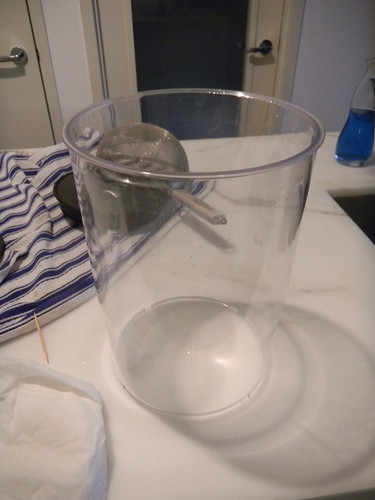
Wipe the entire interior surface with vodka before putting the ume in it.
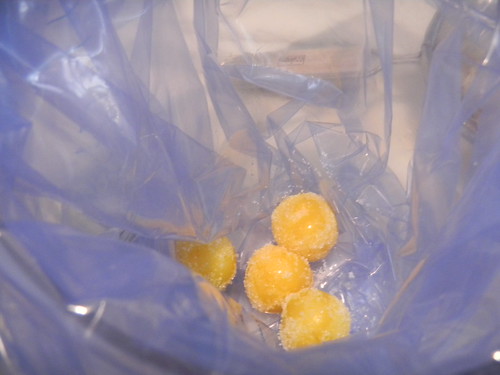
Dump vodka/salt coated ume in the container, then all the leftover salt on top.
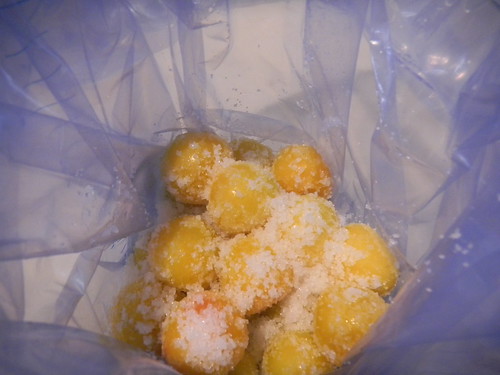
Unlike the west coast, I don't happen to have bunch of bricks in my apartment, so I decided to use water as weight. Place double layered ziploc on top of ume, and pour in water.
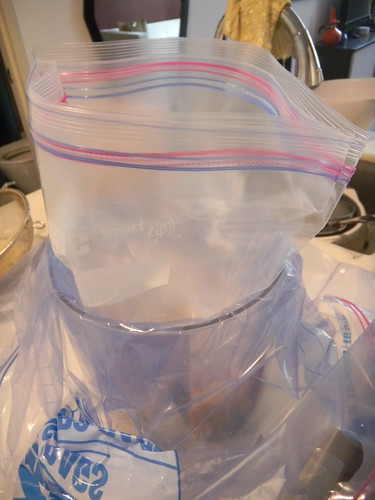
Seal the ziploc full of water.
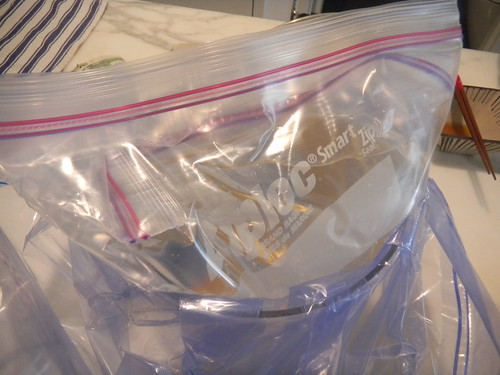
Then, you seal the big ziploc bag full of ume. Try to extract as much of the air as you can.
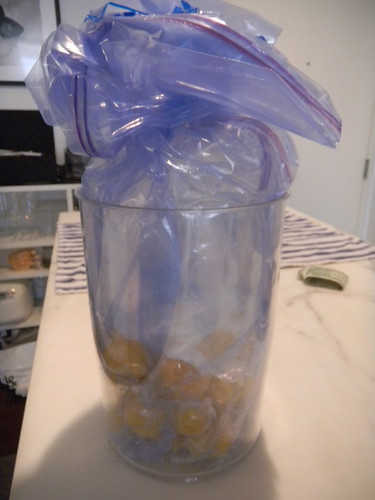
Let's see how it goes. According to the recipe, in about 3-4 days, liquid (ume-zu, or ume vinegar) will cover the ume entirely, then lighten the weight to about the same weight as ume so that you don't crush them.
